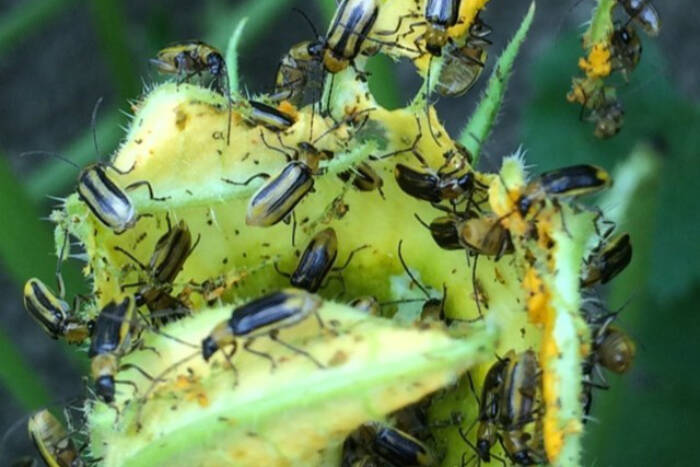An insect that has devastated U.S. corn crops to the tune of $1 billion has been discovered at farms in the North Okanagan and Shuswap.
The Western corn rootworm has made its way to farms in Salmon Arm, Armstrong and Enderby, and poses a significant risk to crops in the area, Susanna Acheampong, a Kelowna-based entomologist with the B.C. Ministry of Agriculture, said Friday.
The pest has been known to be in the Fraser Valley since 2016, and survey efforts have found it from Delta to the Hope area, with the highest populations in Abbotsford and Chilliwack.
Acheampong says the ministry detected the pest on the B.C. coast in 2015.
“I’ve been hoping that we would not see it in the Interior,” she said. “This is the first year that we’ve seen it in the North Okanagan.”
The rootworm has been an issue in the American Midwest for the last 50 years and is also present in Ontario and Quebec. It is estimated that the rootworm species causes over $1 billion in lost corn crops in the U.S. each year. The Ministry of Agriculture notes the pest is “the single greatest contributor to economic loss … in corn growing regions in North America.”
Rootworms are most damaging to crops when they are in the larval stage. By feeding on corn roots, they hinder the plant’s growth and cause instability, resulting in plants tipping over in the wind and poor crop yields.
The insect evolves from a worm to a beetle, and the adult beetles can also cause damage to crops as they feast on the head of the plant.
“(The adult beetle) impacts pollination and then the crops do not develop well,” Acheampong said.
Between the larval worms attacking crop roots and the adult beetles eating the corn and leaves, “it’s a double whammy,” Acheampong said.
Acheampong noted that while the rootworm mainly feeds on corn, it will also affect crops like melons and pumpkins as it feeds on pollen and can damage the flowers of these other crops.
The beetle is about a quarter of an inch in length and is yellow and black in colour. Females have three black stripes while the males’ stripes coalesce and appear more like a black patch.
Farmers in the area are being advised to check their crops for the rootworm beetle, as there are actions they can take to prevent impacts to their crops in following years.
“Normally the best strategy is crop rotation,” Acheampong, explaining that instead of growing corn in back-to-back crop cycles, farmers can grow a different crop, such as alfalfa, to cut off the pest’s food supply.
She said some hybrid corn crops are more resistant to the rootworm and could be an option, and farmers should talk to their seed providers to determine what alternate crops they could plant next year.
Acheampong urged farmers who find the rootworm on their crops to email her at susanna.acheampong@gov.bc.ca, as the ministry will be looking to see how widespread the pest is in the area next year.
READ MORE: Prevention working to keep invasive species out of Shuswap waters
READ MORE: Ralston says salmon run would be wiped out without protection order in Westwold
Corn cropFarmingNorth Okanagan Regional DistrictSalmon ArmShuswap

